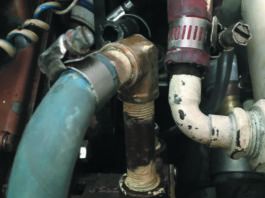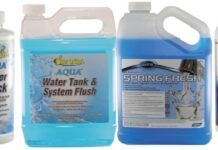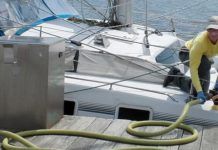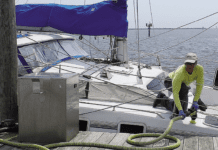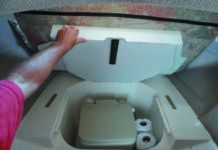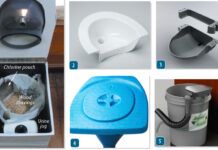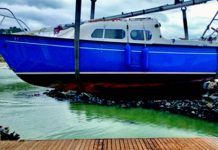The Rain Catcher’s Guide
An efficient, clean rainwater catchment isn't just for cruisers venturing into remote areas. While biologically safe, many areas of the U.S. are served by well water that is not chlorinated, high in sulfate that makes it prone to going bad. When stored in the absence of oxygen, the sulfate becomes the preferred oxygen source for microorganisms and hydrogen sulfide is the byproduct. Only .05 parts per million (ppm) sulfide is required to make water distasteful. Even if the water at your next marina is fresh and sweet, filling from an unfamiliar source is always a roll of the dice.
Keeping Water Clean and Fresh
In the first part of our three-part series covering onboard water quality, we discussed protecting the tank with basic filtration and securing the tank vent. Further action is required, however, as the tank and its contents will always be far from sterile. Municipal water is filtered to remove turbidity, disinfected (typically with chlorine, ozone, or ultraviolet light), filtered once more (often very fine filtration to remove cryptosporidium cysts, which resist disinfection), and disinfected once more (with chlorine or chloramine) to protect the water while its in the distribution system. However, since we are storing the water on our boats, this process of secondary disinfection becomes our responsibility. So what are the options for treating water that is already in an onboard tank?
Solutions for a Stinky Holding Tank
Practical Sailor testers looked at a large field of holding tank additives and found that chemical treatments that rely on disinfection, surfactants, and deodorants are better than nothing, but they still left that distinctive public-restroom smell. We also compared eight top-performing additives from a new generation of tank treatments that use enzymes and bacteria cultures to reduce odors. Tests showed that these bio-augmenting treatments—including Odorlos, SeaLand Max Control, Camco’s TST Citrus, Thetford Eco-Smart, Nature-Zyme, and Aqua-Kem—reduced odors and reduced solids in the tanks, without the port-a-potty smell. We look at the pros and cons of these newer tank treatments, and examine the importance of tank ventilation in reducing odors.
Hassle-free Pumpouts
While its possible the waste pump-out line on the boat is plugged, most pump-out problems can be traced to poor procedure. Instructions on the pump-out station-if provided at all-overlook key factors, probably because the bureaucrat who wrote them didnt actually understand the process. Here are some tips on doing it right.
Composting Head Disposal Options
We wouldn’t describe ourselves as huge fans of composting/desiccation heads (see “Dissecting the Desiccating Head,” PS July 2021). We’re not encouraging people to rip out what...
Yes, We Are Talking About Boat Bidets
Once again we broach a sanitation topic that folks would rather not talk about, and once again we’ve been surprised by the answers we...
Dissecting the Desiccating Head
Our first cruising boat had a conventional portable toilet. We didn’t like it, but we made peace with it, cruising for up to two...
DIY Desiccating Head Options
No standard dry toilet, even the CHead Shorty, would fit the available space on our Corsair F-24, so we decided to build our own....
Mailport: fuel tanks, chain hooks, bilge pumps, and hypothermia
Simple tank fill advice from an old fuel oil delivery guy - when filling your boat diesel tank listen to the sound coming from the tank vent, it is attached directly to your tank. The fueling sound will change when the tank fills and fuel enters the vent line. Stop then. Dont leave fuel sitting in your fill hose in the off-season.
Mailport: Marelon Seacocks
Regarding your recent report on Seacocks (Beneteau Responds to Seacock Query, PS August 2018) I owned a 1987 Catalina 30, Mark II. It had four gate valves instead of seacocks.



































